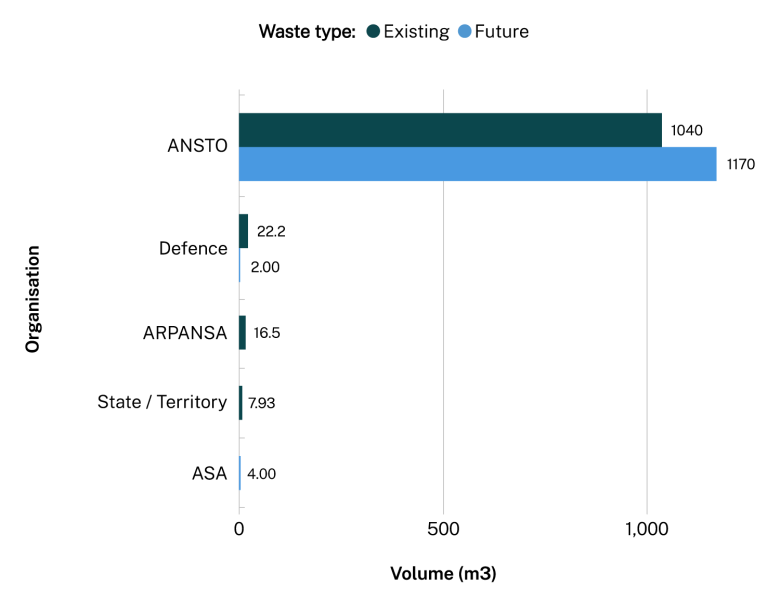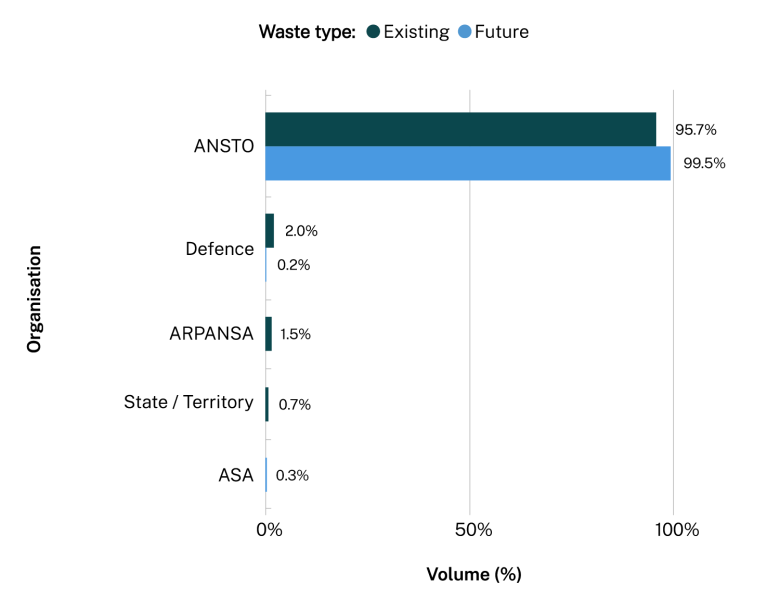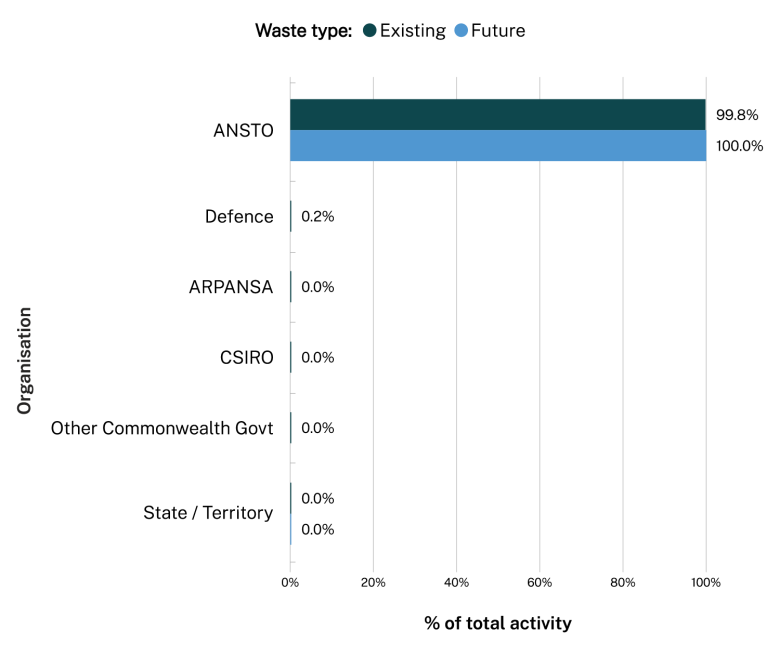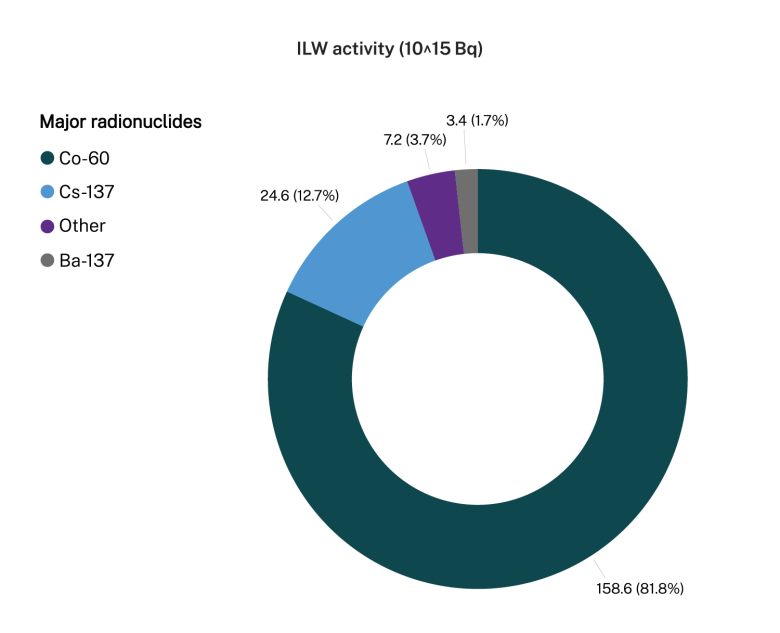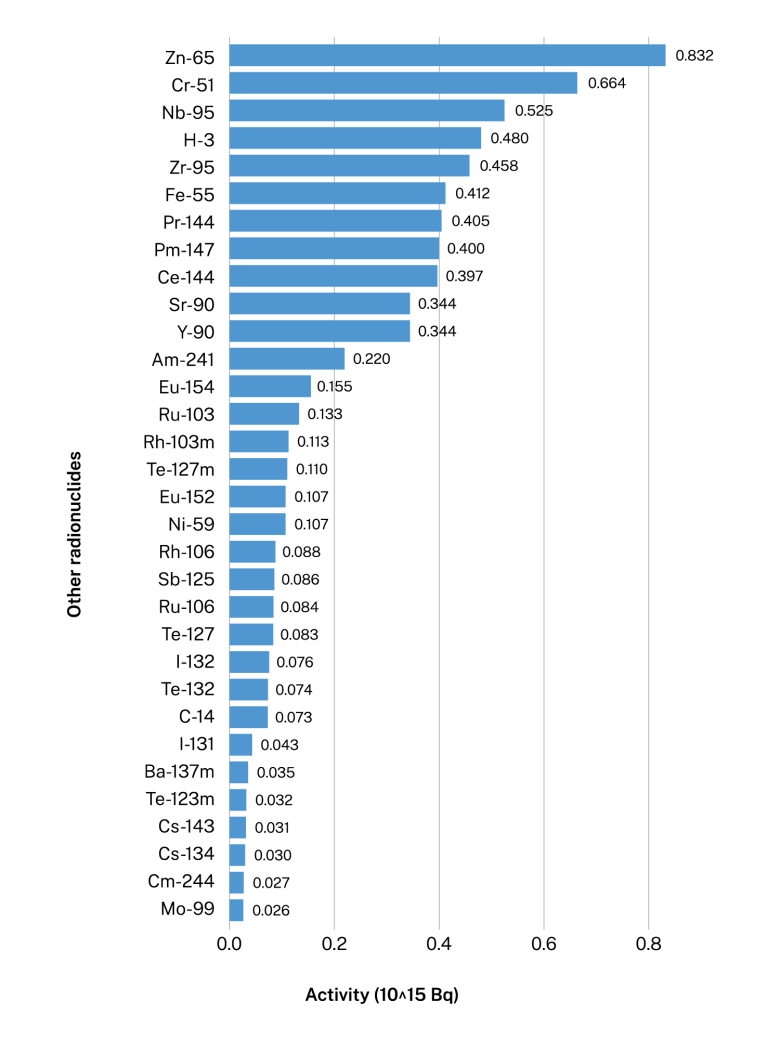This waste emits higher levels of radiation, needs extra shielding and can remain radioactive for a longer time.
Examples include waste from nuclear medicine production and some of the waste from operating the OPAL nuclear research reactor in Sydney.
Volumes
The data estimates the waste’s volume after it has undergone future waste conditioning processes, where the waste holder has provided this information.
Some waste holders provided waste volumes that do not consider future waste conditioning or packaging that disposal may require.
The total numbers in Table 6 are slightly different from Table 1 because we have limited the numbers to 3 significant figures.
| Organisation / group | Existing | Future | Total |
|---|---|---|---|
| ANSTO | 1,040 | 1,170 | 2,210 |
| CSIRO | - | - | |
| Defence | 22 | 2 | 24 |
| ARPANSA | 16 | - | 16 |
| ASA | - | 4 | 4 |
| Other Commonwealth government | - | - | |
| State and territory government and regulators | 8 | - | 8 |
| Total | 1,086 | 1,176 | 2,262 |

